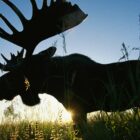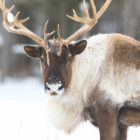What to do when you encounter a Moose
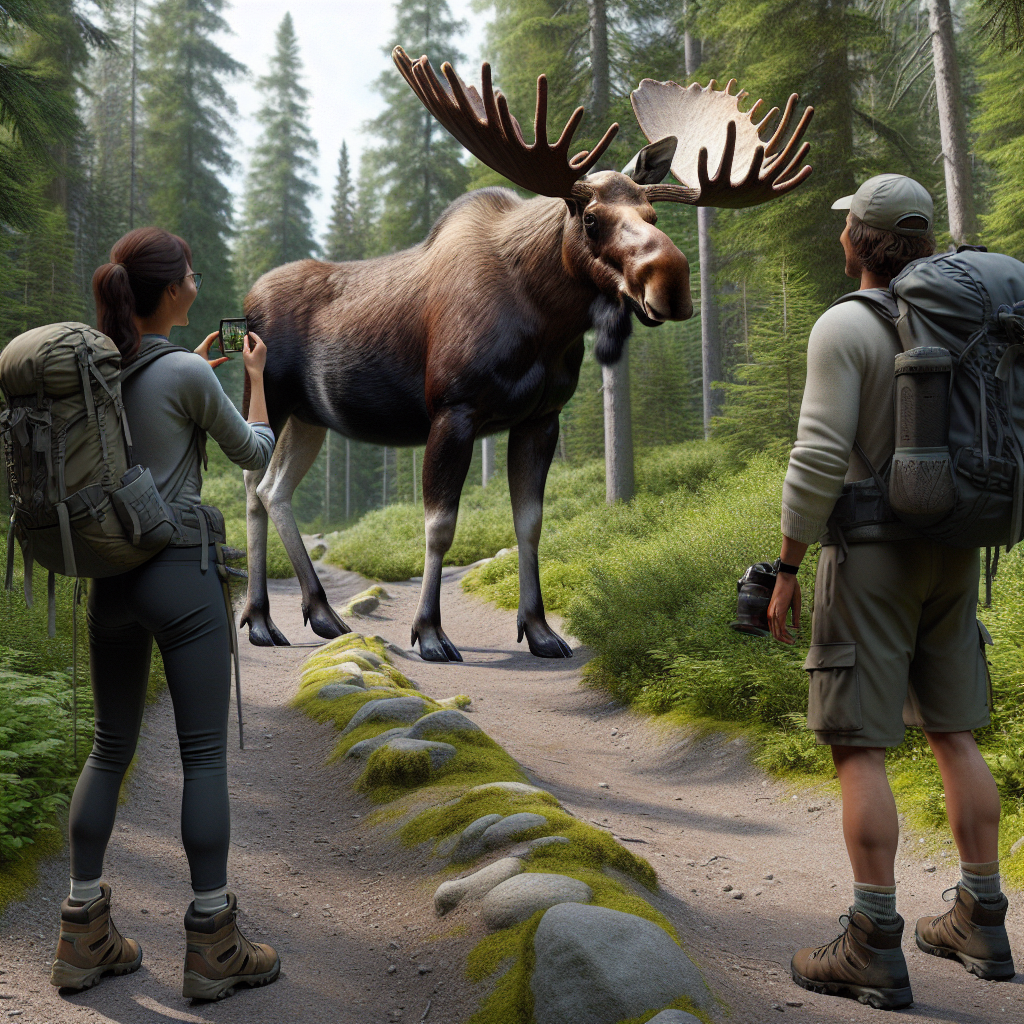
Encountering a moose in the wild can be a memorable experience, given their impressive size and unique behaviors. Understanding how to act appropriately in such situations is essential for both your safety and the well-being of these magnificent creatures.
Dangerous Giants of the Forest
Moose, scientifically known as Alces alces, are imposing herbivores belonging to the deer family. These creatures are characterized by their towering stature, long legs adapted for traversing varied terrain, and the prominent palmate antlers that adorn the males during certain seasons. The anatomy of moose reflects their specialized lifestyle as browsers of woody and aquatic vegetation, with elongated snouts aiding in efficient feeding and a digestive system adept at processing fibrous plant matter.
In their natural habitats, moose exhibit primarily solitary tendencies, preferring to navigate their territories independently. This solitary nature is accentuated by their non-territorial behavior, as moose do not defend specific areas against intruders but rather establish home ranges for foraging and mating activities. However, during the breeding season, also known as the rut, males become more social as they compete for access to receptive females.
Moose are crepuscular animals, most active during dawn and dusk, although they may also be active during the night in areas with minimal human disturbance. Their habitats range from boreal forests to marshy wetlands, reflecting their adaptability to diverse ecosystems. These animals are also excellent swimmers, utilizing their large bodies and strong limbs to navigate water bodies with ease, making them well-suited to their habitats, which often include aquatic resources crucial for their survival.
Despite their generally calm demeanor, moose can exhibit aggression when they feel threatened or cornered, particularly during the rutting season when males vie for mating opportunities. This aggression is often displayed through warning signs such as ears laid back, raised hackles on the neck, stomping or pawing the ground, and vocalizations like grunts or snorts.
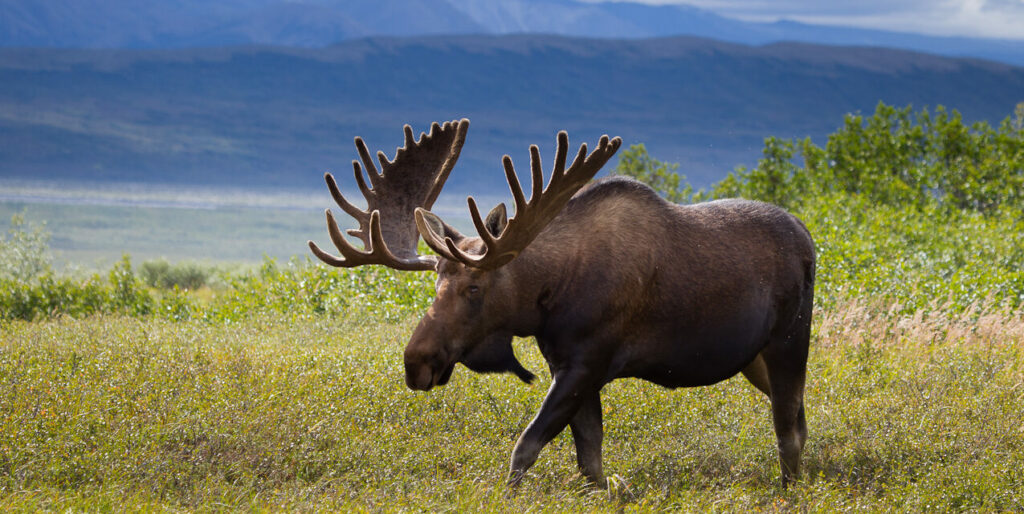
A Lot Bigger Than You
Moose are renowned for their impressive size, with adult males, known as bulls, reaching heights of up to 6.9 feet (2.1 meters) at the shoulder and weighing between 840 to 1,500 pounds (380 to 680 kilograms). Females, or cows, are slightly smaller, standing around 5.6 to 6.6 feet (1.7 to 2 meters) tall and weighing between 500 to 800 pounds (230 to 360 kilograms). These dimensions make moose the largest species in the deer family, a fact that becomes strikingly evident when encountering them in their natural habitats.
One of the most iconic features of male moose is their formidable antlers, which can span up to 6 feet (1.8 meters) from tip to tip and weigh as much as 40 pounds (18 kilograms). These antlers are grown and shed annually, serving primarily as displays of dominance during the mating season. Despite their imposing size, moose antlers are surprisingly agile and are used in sparring matches between males to establish hierarchy and access to breeding opportunities.
In addition to their impressive antlers, moose possess other formidable “weapons” that contribute to their survival in the wild. Their powerful hooves, each equipped with sharp edges and capable of delivering forceful kicks, serve as effective tools for defense and foraging. Moose are also known for their remarkable speed and agility, capable of reaching speeds of up to 35 miles per hour (56 kilometers per hour) when running, particularly in short bursts to evade predators or navigate challenging terrain.
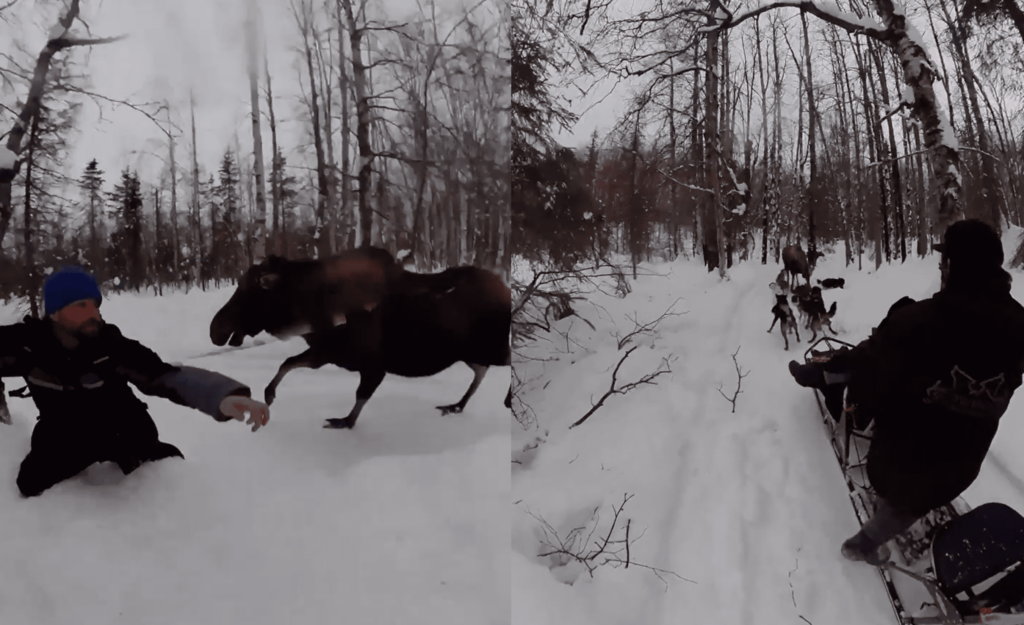
How Dangerous is a Moose?
Moose, despite their serene appearance, can pose significant dangers to humans, particularly in certain regions where encounters are more frequent. In Alaska, where moose outnumber bears by a ratio of 3 to 1, incidents involving moose can lead to serious injuries or even fatalities.
Each year in Alaska, more people are injured by moose attacks than by bear encounters. This startling statistic reflects the reality of living in areas where moose populations are abundant. On average, between 5 to 10 individuals in Alaska sustain injuries annually due to moose-related incidents, ranging from defensive behaviors during encounters to unexpected charges when humans inadvertently startle these massive animals.
One of the most prevalent risks associated with moose encounters is vehicle collisions. The state estimates that over 800 vehicle accidents are caused by moose collisions each year in Alaska alone. These collisions can result in severe injuries or fatalities for drivers and passengers, as moose are large and sturdy animals that can cause substantial damage upon impact.
A unique and tragic incident illustrates the potential dangers of moose encounters. In a case reported in a scientific journal, a moose attacked and killed a woman who was walking her dog in a forest. The autopsy revealed widespread blunt trauma, including a large laceration on one leg with embedded blades of grass. The cause of death was determined to be a flail chest, resulting from the moose’s stomping and goring actions.
Dos and Don’ts When Encountering a Moose
Encountering a moose in the wild can be a thrilling experience, but it’s essential to know how to react appropriately to ensure your safety and that of the moose. Here are some dos and don’ts when facing a moose:
Do: Give the Moose Space
Moose, like many wild animals, prefer their personal space. If you come across a moose, maintain a safe distance and avoid approaching it. Respect its territory and observe from a distance to minimize any potential threats.
Don’t: Startle or Agitate the Moose
Avoid making sudden movements or loud noises that could startle the moose. If you notice the long hairs on its hump raised, ears laid back, or it’s licking its lips, these are signs of potential agitation or aggression. Back away slowly and calmly without making direct eye contact.
Do: Assess the Situation
If a moose is obstructing your path, evaluate the surroundings for alternative routes. If there’s no other way around, be patient. Moose will typically move away on their own given time. Avoid approaching or attempting to chase away the moose, especially if its escape route is in your direction.
Don’t: Approach a Moose’s Only Escape Route
Never approach a moose if its only means of escape is towards you. Always leave yourself multiple escape routes and keep a barrier such as a large tree, snow berm, vehicle, building, or fence between you and the moose if you need to pass by.
Do: Use Pepper Spray as a Last Resort
If a moose charges or becomes aggressive, pepper spray can be an effective deterrent. However, it should only be used as a last resort and with caution. Be aware of wind direction when using pepper spray to avoid affecting yourself or others nearby.
Don’t: Run Unnecessarily
While it’s generally advised not to run from bears, moose are different. If a moose charges, it’s often a bluff to warn you to stay back. However, take these charges seriously and back away slowly. If knocked down, curl into a ball, protect your head with your hands, and remain still until the moose retreats.
When a Moose is Ready to Go
An encounter with an anxious or agitated moose can escalate rapidly, emphasizing the importance of recognizing warning signs to avoid potentially dangerous situations.
When moose are feeling threatened or stressed, they may exhibit a range of warning signs. One of the most noticeable indicators is when they lay their ears back, a behavior akin to what dogs or cats do when agitated.
Additionally, the hair on the back of their neck and above the hips may stand up, a visible display of their heightened alertness. They might also smack their lips, show the whites of their eyes, toss their head upward like a horse, or even urinate on their back legs. These behaviors, individually or in combination, signal that you are too close and in a potentially dangerous situation.
However, it’s important to note that moose may not always display these warning signs until they abruptly charge. The rapidity with which these behavioral cues can escalate into aggression underscores the need for vigilance and caution in moose encounters.
Understanding the seasonal behaviors of moose is also essential in assessing potential risks. During the fall mating season in late September and October, known as the rut, bull moose may exhibit increased aggression, fueled by elevated testosterone levels. This natural aggression can make them particularly defensive and reactive to perceived threats, including humans.
In contrast, in late spring and summer, cow moose with young calves are exceptionally protective and may attack humans who come too close. This heightened protectiveness stems from a strong motherly instinct to safeguard their offspring from potential harm.

